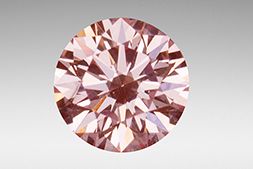|
|
GIA Finds Baffling Flaw in CVD Diamond
Jul 2, 2017 8:13 AM
By Joshua Freedman
|
|
|
RAPAPORT... The Gemological Institute of America (GIA) doesn’t usually
declare itself stumped, but a recent discovery of a flaw in a synthetic diamond
that’s almost always associated with natural stones left scientists scratching
their heads.
Gemologists studying a round, brilliant-cut, 0.26-carat,
pink laboratory-grown diamond found a surprising “H4 defect” — a common
characteristic of natural diamonds. It was the first time the GIA had
identified such a phenomenon in a stone created using chemical vapor deposition
(CVD), one of the main processes for developing synthetic diamonds, the
laboratory reported recently.
The H4 defect occurs where the diamond crystal structure
contains four nitrogen atoms and two “vacancies,” or missing atoms. Gemologists
often find the phenomenon in diamonds that contain a certain type of nitrogen that
is very difficult to recreate in synthetic diamonds, the GIA explained.
The stone had been submitted to the GIA’s Carlsbad
laboratory for a synthetic colored-diamond grading report. Experts confirmed it
was grown using a gas that was “doped” with nitrogen, while the pink color came
from irradiation and a heating process called annealing. The way the manufacturers
had probably created the stone made the H4 defect especially “puzzling,” the GIA
said.
“It is possible that the H4 was created during the
irradiation and annealing process, but among the many samples GIA has examined,
this was the first observation of this defect in a CVD synthetic diamond,” it said. |
|
|
|
|
|
|
|
|
|
Tags:
carlsbad, chemical vapor deposition, cvd, Gemological Institute of America, gemology, GIA, H4 defect, Joshua Freedman, lab-grown diamonds, Rapaport News, Synthetic diamonds, Synthetics
|
|
|
|
|
|
|
|
|
|
|

|
|